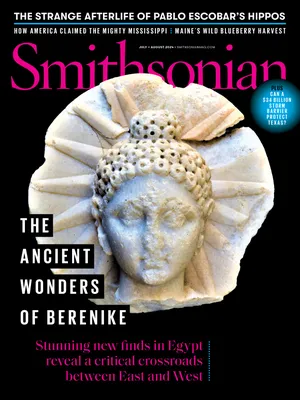Bumblebees’ round, hairy bodies are magnets for pollen. Inside flowers, they often “slip, almost fall and somersault,” says conservation biologist Leif Richardson of the Xerces Society for Invertebrate Conservation, an international nonprofit. “They make a huge mess and get pollen all over themselves, which makes them effective pollinators for plants,” Richardson says.
Being relatively big and covered in black-and-yellow fuzz allows the world’s roughly 250 bumblebee species to withstand more frigid temperatures than honeybees, which are generally daintier and less hairy, and are not native to North America. This makes bumblebees key pollinators in colder, higher-elevation regions such as the Sierra Nevada, the Cascades and the Rocky Mountains of North America.
Bumblebees also best honeybees as pollinators for the 6 percent of flowering plants, including blueberries, bell peppers, eggplants and tomatoes, that hide their pollen in tube-shaped structures called anthers. Such flowers require buzz pollination, when bumblebees use their flight muscles to vibrate their bodies, shaking loose a shower of pollen. Despite their ecological importance, however, more than a quarter of North America’s nearly 50 bumblebee species face some risk of extinction. The Morrison bumblebee, for example, has declined in relative abundance by 74 percent in the last decade. This large, egg-yolk-yellow denizen of the sagebrush steppe inhabits 14 states in the American Intermountain West, but recent surveys have recorded the bee in just a third of the areas it has historically occupied. Threats to this species echo those faced by other bumblebees: pesticide use; increased drought due to climate change; habitat loss and degradation from cattle grazing and agriculture; and, not least, competition from the billions of managed European honeybees trucked around the United States to pollinate crops like almonds. Managed bees hurt native pollinators not only by eating up the landscape’s limited supply of nectar and pollen, but also by spreading parasites and disease. “When you pile those factors on top of each other, you put this species at a real disadvantage for survival,” says Jamie Strange, an entomologist at Ohio State University.
Last year, Richardson and his colleagues filed a petition with the U.S. Fish and Wildlife Service to list Morrison bumblebees under the U.S. Endangered Species Act. Granting the bee federal protection would mobilize government funding, create a flood of research attention and require the creation of a recovery plan to guide its conservation. This summer, the Xerces Society is also expanding its Bumble Bee Atlas project—which organizes citizen scientists to gather data on local bumblebees through surveys—from 15 to 20 states. Rich Hatfield, the Xerces Society’s lead bumblebee conservation biologist, says the expansion will deliver key information on how the bees are faring over the next three years. Residents in those states looking to help native pollinators can join their local Bumble Bee Atlas chapter or fill their gardens with native flowers such as thistles, milkweed, sunflowers and rabbitbrush to provide more food to these busy bees.
:focal(1600x1204:1601x1205)/https://tf-cmsv2-smithsonianmag-media.s3.amazonaws.com/filer_public/fd/a9/fda9e1de-ac25-4df2-90cc-ae6000b60ae0/bumble_bee.jpg)

/https://tf-cmsv2-smithsonianmag-media.s3.amazonaws.com/accounts/headshot/alex.png)